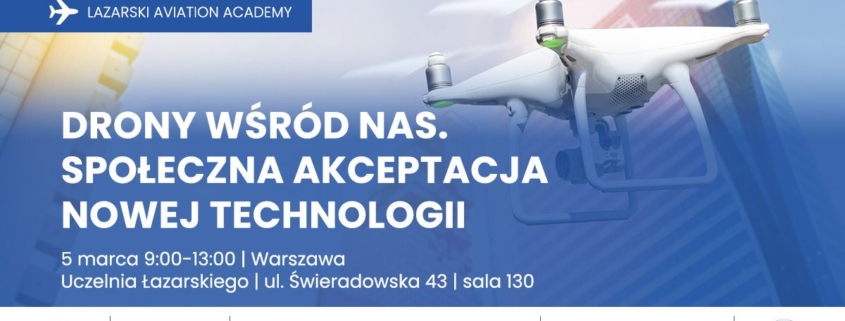On April 24, 2025, an international drone workshop was held in Prague, focusing on the analysis of regulations and the future of the Unmanned Aerial Systems (UAS) sector in the Central and Eastern Europe (CEE) region. This was the first of three scheduled meetings aimed at deepening cooperation between Poland, the Czech Republic, and Slovakia in the areas of UAS regulations, LUC certification, and the implementation of the SORA methodology. The Chamber was represented by Management Board Member – Radosław Zych. The next workshops will take place in Slovakia and Poland.
The event was organized by the Adapt Institute as part of a project conducting strategic foresight for the drone industry in the CEE region. The workshop gathered representatives from aviation authorities, the military, UAS associations, and industry from the three countries. The second Polish representative was Mr. Rafał Paprocki from the Polish Air Navigation Services Agency.
Key topics of the drone workshop:
Participants gave presentations on the following topics:
- Strategic Foresight Research Project on the Future of Drones in the CEE – Imrich Martoň (Facta Pro Futura / Adapt Institute)
- UAS Legislation Implementation in the Czech Republic – Petr Plaček (Civil Aviation Authority, CZ)
- Operation of UAS in the Control Zones (CTR) in the Czech Republic – Aleš Böhm (Air Navigation Services, CZ)
- U-Space Implementation Approach of Poland – Rafał Paprocki (Polish Air Navigation Services)
- Polish Chamber of Unmanned Systems – Radosław Zych (Polish Chamber of Unmanned Systems)
- Zephyr UAS – Štefan Dusza (Zephyr UAS, SK)
- Recent Policy Developments and Legal Frameworks in Slovakia – Eva Szuťányiová, Lt. Dalibor Popjak (Military Aviation Authority, SK)
- Slovak Mám Dron Association – Václav Michalčík (Mám Dron Association, SK)
- Assumptions, Uncertainties and Drivers of Change – Imrich Martoň, Matej Kandrík (Adapt Institute, SK)
The result of all three meetings will be a final report on the state of the UAS industry in each of the participating countries, along with proposals for implementing solutions that could improve the sector’s development and strengthen cooperation between Poland, the Czech Republic, and Slovakia.

Our representative – Radosław Zych – found the event very interesting and considered the exchange of experiences highly fruitful, bringing many new ideas ready to be proposed in Poland. The Czech side appreciated the idea of organizing educational sessions with drones in schools, with a possibility of introducing such classes starting this September. Additionally, in the Czech Republic, it is currently not possible to obtain STS qualifications, as the examination requirements are unachievable by the Czech Civil Aviation Authority. That authority only conducts exams for the open category (which are significantly more difficult than in Poland), although it has already issued two LUC certificates (while Poland has not issued any so far). Interestingly, most UAS operations in the Czech Republic are carried out under simplified authorizations without using the SORA methodology – they are a hybrid of NSTS-PDRA-authorizations. Furthermore, these permissions will not expire at the end of the year as Polish NSTS ones do. There is also no obligation to report each flight – an AirMap application for flight reporting is only planned. In Slovakia, a private and free “Mam dron” application is already in use.
Next steps
The second workshop in the series will take place in Slovakia, with a focus on drone operation safety. The Polish Chamber of Unmanned Systems will be represented by the President of the Management Board – Robert Fintak.
The outcome of the three workshops will be a final report including an analysis of the UAS industry status in CEE countries, implementation recommendations, and proposals for joint actions aimed at market development and harmonization of UAS regulations.







